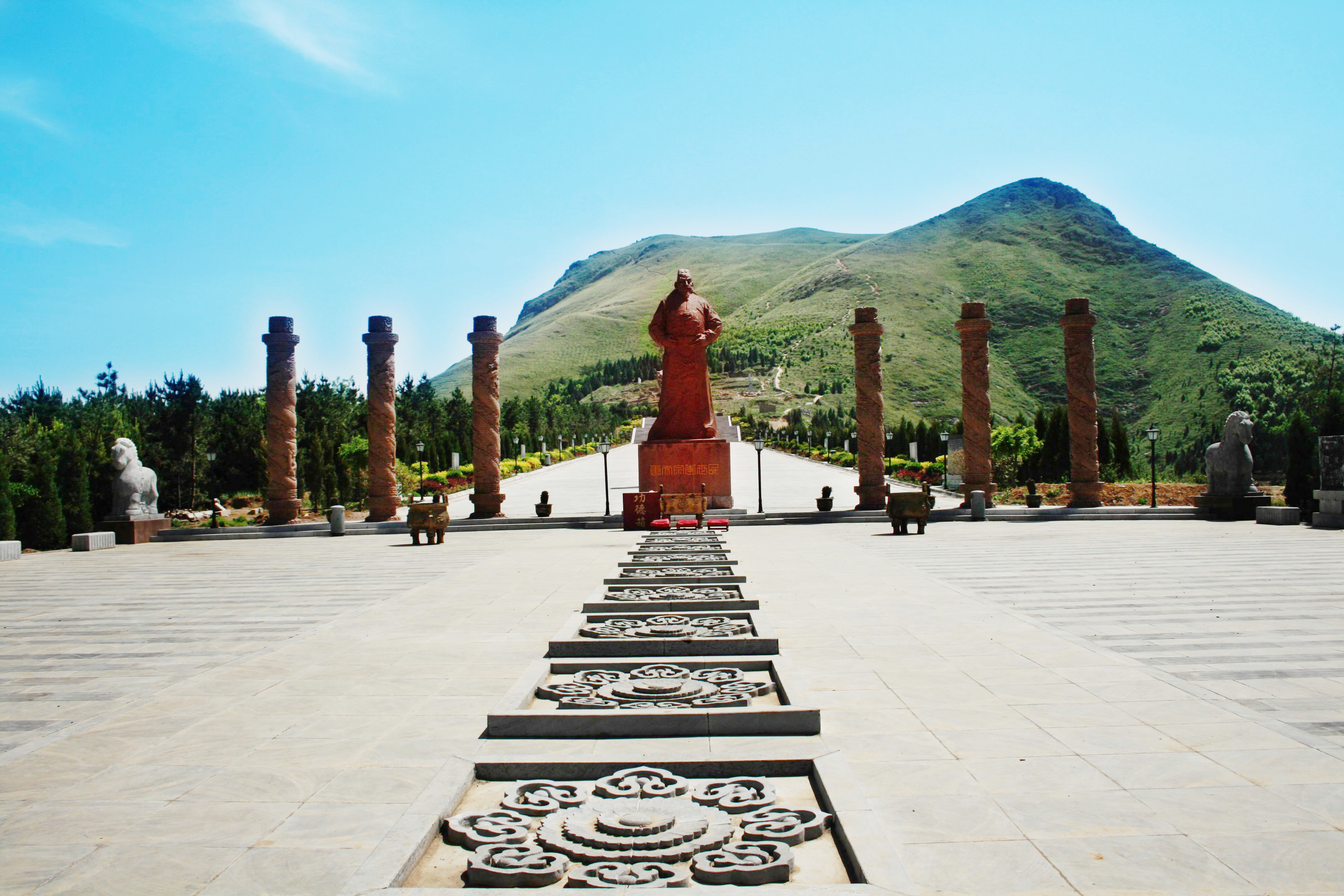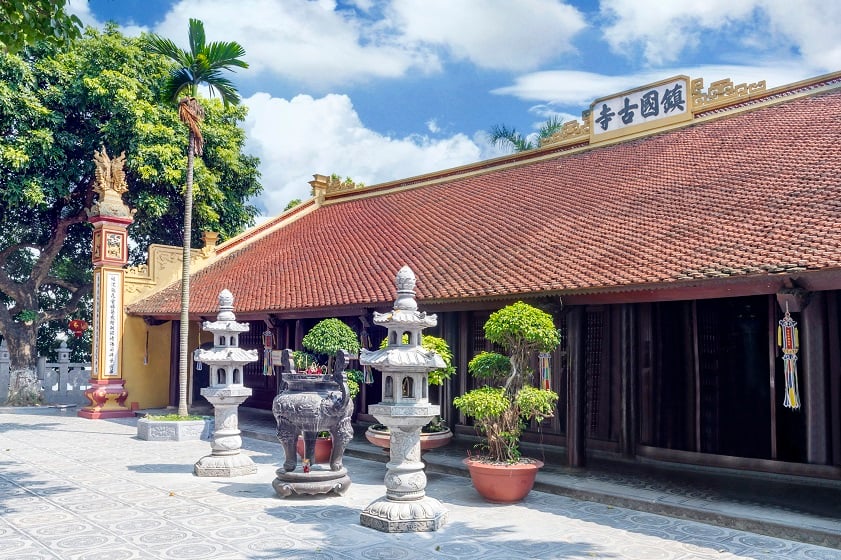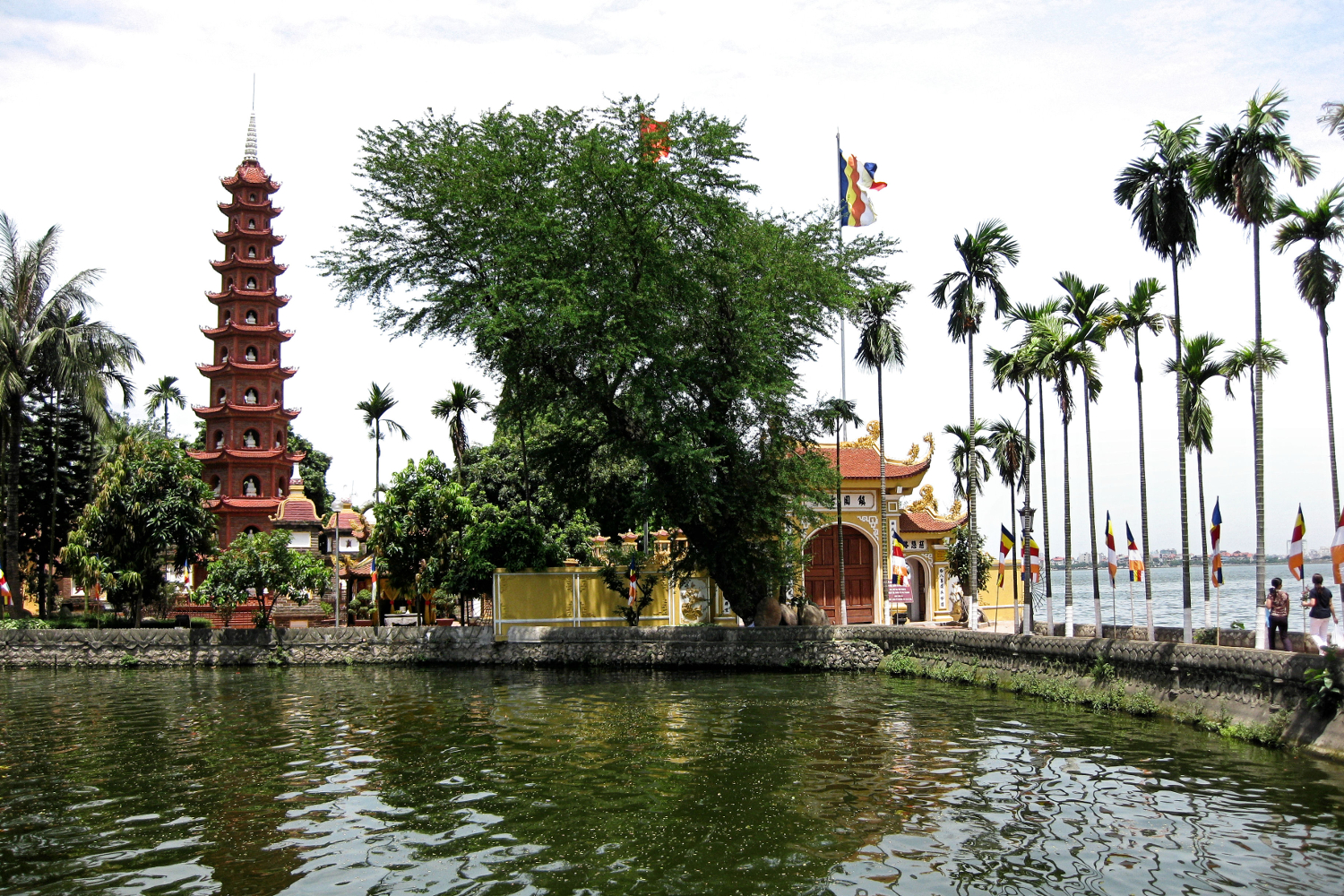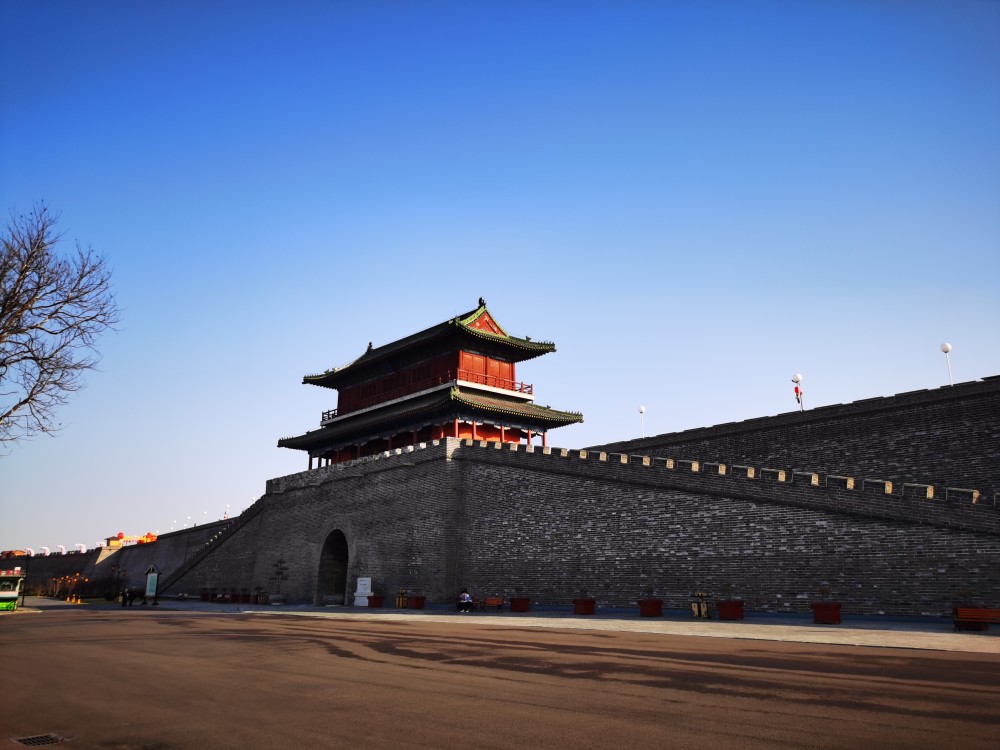
漢德百科全書 | 汉德百科全书
 History
History


Das Zhaoling-Mausoleum (昭陵, Zhāolíng) ist das Grab des Kaisers Taizong (Li Shimin) der Tang-Dynastie. Es befindet sich im Kreis Liquan der bezirksfreien Stadt Xianyang in der chinesischen Provinz Shaanxi.
Berühmt sind seine sechs Steinreliefs von Kriegspferden (Zhāolíng liùjùn, 昭陵六骏).

Zhao (chinesisch 趙 / 赵, Pinyin Zhào) war ein Staat des chinesischen Altertums während der Zeit der Streitenden Reiche, der 403 v. Chr. entstand und vom Staat Qin 228 v. Chr. annektiert wurde.
Er grenzte an die Staaten Qin, Wei und Yan. Seine Hauptstadt war Handan. Das Territorium umfasste Gebiete in der Heutigen Inneren Mongolei sowie den Provinzen Hebei, Shanxi und Shaanxi.
Zhao (Chinese: 趙) was one of the seven major states during the Warring States period of ancient China. It was created from the three-way Partition of Jin, together with Han and Wei, in the 5th century BC. Zhao gained significant strength from the military reforms initiated during King Wuling's reign, but suffered a crushing defeat at the hands of Qin at the Battle of Changping. Its territory included areas now in modern Inner Mongolia, Hebei, Shanxi and Shaanxi provinces. It bordered the Xiongnu, the states of Qin, Wei and Yan. Its capital was Handan, in modern Hebei Province.
Zhao was home to administrative philosopher Shen Dao, sophist Gongsun Long and the Confucian Xun Kuang.[1]
Zhao (chinois simplifié : 赵国 ; chinois traditionnel : 趙國 ; pinyin : - 453 - 228 av. J.-C.) était l'un des sept États qui composaient la Chine antique pendant la Période des Royaumes combattants. Initialement clan de grands feudataires de l'Hégémonie de Jin, le Zhao fut l'un des trois États créés par la partition de celui-ci par les trois familles en 403 av. J.-C.. D'abord de faible importance, le Zhao sut se développer jusqu'à devenir l'un des royaumes majeurs, avant d'être finalement détruit par le royaume de Qin.
Son territoire s'étendait sur les provinces actuelles de la Mongolie-Intérieure, du Hebei, du Shanxi et du Shaanxi. Les frontières de cet état touchaient le pays des Xiongnu ainsi que les royaumes du Qin, du Wei et du Yan.
Lo stato di Zhao (pinyin: zhào, cinese tradizionale: 趙, cinese semplificato: 赵) fu uno Stato cinese del Periodo dei regni combattenti. All'inizio del periodo era uno degli stati più deboli, ma si rafforzò sotto il re Wuling di Zhao, e alla fine del periodo era l'unico regno in grado di opporsi alla potenza dello Stato di Qin.
Il territorio dello Stato di Zhao comprendeva parte dell'odierna Mongolia Interna e delle province di Hebei, Shanxi e Shaanxi. Confinava con gli Xiongnu e con gli Stati di Qin, Wei e Yan. La capitale era Handan (邯郸), presso la odierna Handan, Hebei.
Zhao (chino tradicional: 趙; chino simplificado: 赵; Wade-Giles: Chao4; pinyin: Zhào) fue un estado chino durante el período de los Reinos Combatientes. Su territorio incluía áreas de las actuales provincias de Mongolia Interior, Hebei, Shanxi y Shaanxi. El estado de Zhao tenía fronteras con los xiongnu y los estados de Qin, Wei y Yan. Su capital era Handan (邯鄲), suburbio de la actual ciudad de Handan en Hebei.
Чжао (кит. упр. 趙, пиньинь: Zhào, палл.: Чжао) — одно из семи основных северокитайских царств Периода Сражающихся царств (Чжаньго). Существовало с 403 года до н. э. по 222 год до н. э.

在谈及浙派古琴时,不得不谈到该派的奠基人或创始人郭楚望。
郭楚望,浙江永嘉人(今丽水),南宋景定、咸淳(1260-1274)以琴艺知名于天下。在张岩家作客期间,继承并整理了韩侂胄祖传古谱。韩、张因主张抗击侵略,收复失地,反对程朱理学等,被黜。郭深感政局腐败,犹如云雾遮蔽九嶷山,创作了著名琴曲《潇湘水云》,又有《秋鸿》、《飞鸣吟》、《泛沧浪》、《春雨》等作品。刘志芳(浙江天台人)是郭的学生,他继承了老师的琴学,创作《忘机曲》(即后来的《鸥鹭忘机》)、《吴江吟》等,并传其琴艺于毛敏仲、徐天民等,这样,“浙派古琴”正式形成。浙派琴人可谓是人才济济,仅存见于文献记载的就有四十余人,代表者有宋代末期的刘志芳、毛敏仲、徐天民、杨缵,元代的袁桷、金如砺、宋尹文,明代的徐和仲、张助和黄献等。

 Science and technology
Science and technology

 Science and technology
Science and technology
 The first industrial revolution and its leaders and followers
The first industrial revolution and its leaders and followers

真谛(梵语:परमार्थ Paramārtha,499年—569年),音译波罗末陀,又名亲依(梵语:Kulanātha),音译拘罗那他,中国佛教四大译经家之一。
西天竺优禅尼国人,出身婆罗门种姓。少时博访众师,学通内外,尤精于大乘之说。为印度大乘佛教瑜伽行派传人,主宗无相(nirākāra)唯识学。安慧的唯识理论,主张只有“自证分”是实有,见、相二分都非实有,所以他的唯识理论是“无相唯识”。
由于博览群书,精通佛理,立志周游诸国,弘阐佛法,不畏艰险,先至扶南(今柬埔寨),后由梁武帝礼请来到中国,大同十二年达于南海(广州)。武帝太清二年(548年)抵达建业(南京),因遇侯景之乱,被迫逃难于苏杭,后开始从事佛经翻译事业,一生共翻译64部278卷,其中以《摄大乘论》、《俱舍论》、《金七十论》等最为著名。晚年(562年)因感慨“弘法非时,有阻来意”,于是坐船欲西返印度,但却被风浪所阻,又漂回广州。
受刺史欧阳?竭诚供养,智恺等人亦来皈依,由此继续其翻译、弘法事业。真谛翻译经典的特色,是一边讲学、一边翻译,译述并进,并时常从事“义疏注记”。史载他“循环辩释,反复郑重,乃得相应。一章一句,备尽研核,释义若竟,方乃著文。”在他的影响下,成立了摄论宗、俱舍宗一派。真谛之著作皆已佚失,其学说只能在吉藏、圆测、窥基、法藏等人的引述及其译作中得见。
Paramārtha (Sanskrit, Devanagari: परमार्थ; traditionelles Chinesisch: 真諦; vereinfachtes Chinesisch: 真谛; Pinyin: Zhēndì) (499-569 n. Chr.) war ein indischer Mönch aus Ujjain, der vor allem für seine produktiven chinesischen Übersetzungen buddhistischer Texte während der Zeit der Sechs Dynastien bekannt ist. Er ist als einer der vier großen Übersetzer in der chinesischen buddhistischen Geschichte bekannt (zusammen mit Kumārajīva und Xuanzang). Er ist auch für die verschiedenen mündlichen Kommentare bekannt, die er zu seinen Übersetzungen gab und die von seinen Schülern niedergeschrieben wurden (und heute nur noch in fragmentarischer Form erhalten sind). Einige von Paramārthas einflussreichen Übersetzungen sind Vasubandhus Abhidharmakośa, Asaṅgas Mahāyānasaṃgraha und Dignāgas Ālambanaparīkṣā & Hastavālaprakaraṇa.







Trấn Quốc Pagode (Vietnamesisch: chùa Trấn Quốc, chữ Nôm: ?鎭國; Vietnamesisch: Trấn Quốc tự, chữ Hán: 鎮國寺), der älteste buddhistische Tempel in Hanoi, befindet sich auf einer kleinen Insel in der Nähe des südöstlichen Ufers des Westsees in Hanoi, Vietnam.
镇国寺(越南语:Chùa Trấn Quốc/?鎮國)是越南河内的一座佛寺,坐落于靠近西湖东南岸的一个小岛上。镇国寺是河内最古老的佛寺,最初建于公元六世纪李南帝统治时期,名为开国寺,选址在红河岸边。由于河流的侵蚀,该寺在1615年搬迁到西湖中的金鱼岛,即今天的所在地。一条小堤道连接着陆地。多年来,镇国寺曾命名为安国寺以及镇北寺。镇国寺位于西湖以东的一座小岛上,是河内市最古老的寺庙。这座寺年纪1500岁多并最近被评选为世界上最美的寺庙之一”。该网站还提供镇国寺的水湖和这座寺庙的亮点——菩提树。这是源自25个世纪前印度菩提伽耶释迦牟尼悟道的菩提树衍生出来的。


The Rashidun Caliphate (Arabic: الخلافة الراشدة, al-Khilāfa al-Rāšidah; 632–661) was the first of the four major caliphates established after the death of the Islamic prophet, Muhammad. It was ruled by the first four successive caliphs (successors) of Muhammad after his death in 632 CE (AH 11). These caliphs are collectively known in Sunni Islam as the Rashidun, or "Rightly Guided" caliphs (اَلْخُلَفَاءُ ٱلرَّاشِدُونَ al-Khulafā’ur-Rāshidūn). This term is not used in Shia Islam as Shia Muslims do not consider the rule of the first three caliphs as legitimate.[2]
The Rashidun Caliphate is characterized by a twenty-five year period of rapid military expansion, followed by a five-year period of internal strife. The Rashidun Army at its peak numbered more than 100,000 men. By the 650s, the caliphate in addition to the Arabian Peninsula had subjugated the Levant, to the Transcaucasus in the north; North Africa from Egypt to present-day Tunisia in the west; and the Iranian plateau to parts of Central Asia and South Asia in the west.
The caliphate arose out of the death of Muhammad in 632 CE and the subsequent debate over the succession to his leadership. Abu Bakr, a close companion of Muhammad from the Banu Taym clan, was elected the first Rashidun leader and began the conquest of the Arabian Peninsula. He ruled from 632 to his death in 634. Abu Bakr was succeeded by Umar, his appointed successor from the Banu Adi clan, who began the conquest of Persia from 642 to 651, leading to the defeat of the Sassanid Empire. Umar was assassinated in 644[3] and was succeeded by Uthman, who was elected by a six-person committee arranged by Umar. Under Uthman began the conquest of Armenia, Fars and Khorasan.[4] Uthman was assassinated in 656[5] and succeeded by Ali, who presided over the civil war known as the First Fitna (656–661). The war was primarily between those who supported Uthman's cousin and governor of the Levant, Muawiyah, and those who supported the caliph Ali. The civil war permanently consolidated the divide between Sunni and Shia Muslims, with Shia Muslims believing Ali to be the first rightful caliph and Imam after Muhammad.[6] A third faction in the war supported the governor of Egypt, Amr ibn al-As. The war was decided in favour of the faction of Muawiyah, who established the Umayyad Caliphate in 661.
四大哈里发或正统哈里发(阿拉伯文:الخلفاء الراشدون)是指伊斯兰教创始人穆罕默德逝世后自632年至661年相继执掌阿拉伯伊斯兰国家政教大权的四位继承人(即哈里发),他们分别是阿布·伯克尔、欧麦尔·本·赫塔卜、奥斯曼·本·阿凡和阿里·本·阿比·塔利卜。由于四大哈里发都是通过民主选举或推举而产生的,他们的继位获得了大多数穆斯林的认可,故称这一时期为哈里发国家的“神权共和时期”。
逊尼派穆斯林承认四位哈里发都是先知穆罕默德的合法继承人,故有“正统”之称,而什叶派穆斯林只承认阿里及其后裔是合法的哈里发,视阿里之前的三位哈里发为篡位者。
正统哈里发在位期间,新生的阿拉伯伊斯兰政权得到了巩固,并开始了大规模的对外征服(穆斯林称之为圣战),传播了伊斯兰教,为阿拉伯帝国的形成奠定了基础。
第四位“正统哈里发”阿里遇刺后,继哈里发之位的其子哈桑·本·阿里·本·阿比·塔利卜不久就在叙利亚总督穆阿威叶的威逼利诱下放弃哈里发之位,穆阿威叶继任哈里发,哈里发国家的“神权共和”时期结束,开始了世袭制的倭马亚王朝。
Les califes bien guidés (en arabe : اَلْخِلَافَةُ ٱلرَّاشِدَةُ al-Khilāfātu al-Rāshidatu)(632-661) désignent les quatre premiers califes. Cette appellation vient du fait qu'ils sont considérés dans l'islam sunnite comme des chefs modèles qui ont suivi scrupuleusement la voie de Mahomet. Ils étaient pour la plupart les compagnons très proches du prophète. Leur succession, pas héréditaire à la base deviendra la coutume[pas clair] pour les successions musulmanes postérieures. Le concept et la dénomination de « califes bien guidés » a été créé postérieurement, par la dynastie abbasside, et sa dénomination est inspirée par le hadith où Mahomet a dit : « Tenez fermement à mon exemple (sunna) et celui des califes bien guidés1 ».
L'espressione Califfato dei Rāshidūn (in arabo: خلافة ﺍﻟﺮﺍﺷﺪﻭﻥ, Khilāfat al-Rāshidūn), ossia "Califfato degli Ortodossi", identifica il trentennio circa di storia islamica (632-661) in cui la Umma fu retta dai quattro Califfi Abū Bakr, ʿUmar ibn al-Khattāb, ʿUthmān b. ʿAffān e ʿAlī b. Abi Tālib. L'essere stati tra i musulmani più illustri per anzianità di fede (sābiqa) e per parentela o affinità col profeta Maometto (karāba), e l'essere stati prescelti in base a criteri di efficienza e non di appartenenza familiare, li ha fatti definire dai musulmani come "ortodossi" (rāshidūn).[2]
El califato bien guiado o califato Rashidun (en árabe: الخلفاء الراشدون al-ḫulafāʔ al-rāšidūn) es el nombre que se da en la tradición musulmana sunní a los cuatro primeros califas que sucedieron a Mahoma, desde el 632 al 661. En muchas lenguas europeas se les conoce también como califas ortodoxos. Los sunníes de lengua urdu a veces les llaman los cuatro amigos (چار یار, chaar yaar) y a su dominio el reinado de los cuatro califas.
Algunos incluyen a Hasan ibn Ali, hijo de Alí, como el quinto califa rāshid.
Según los chiíes, el primer califa fue Alí seguido de los imames chiíes, pues aducen que esta sucesión la decidió el mismo Mahoma.
Para los jariyitas (abadíes), no hubo más que dos califas bien guiados, ya que, en su opinión, sólo parte de los califatos de Uthmán y Alí ibn Abi Tálib fueron bien guiados.
Пра́ведный халифа́т (араб. الخلافة الراشدية) — государство, созданное после смерти пророка Мухаммеда в 632 году. Халифат последовательно возглавляли четыре праведных халифа: Абу Бакр, Умар ибн аль-Хаттаб, Усман ибн Аффан и Али ибн Абу Талиб. Территория халифата включала Аравийский полуостров, Шам, Кавказ, часть Северной Африки от Египта до Туниса и Иранское нагорье. Праведный халифат положил начало Арабскому халифату.
 Vacation and Travel
Vacation and Travel
 Architecture
Architecture
 Religion
Religion

 Traditions
Traditions
 Music
Music

 Review
Review